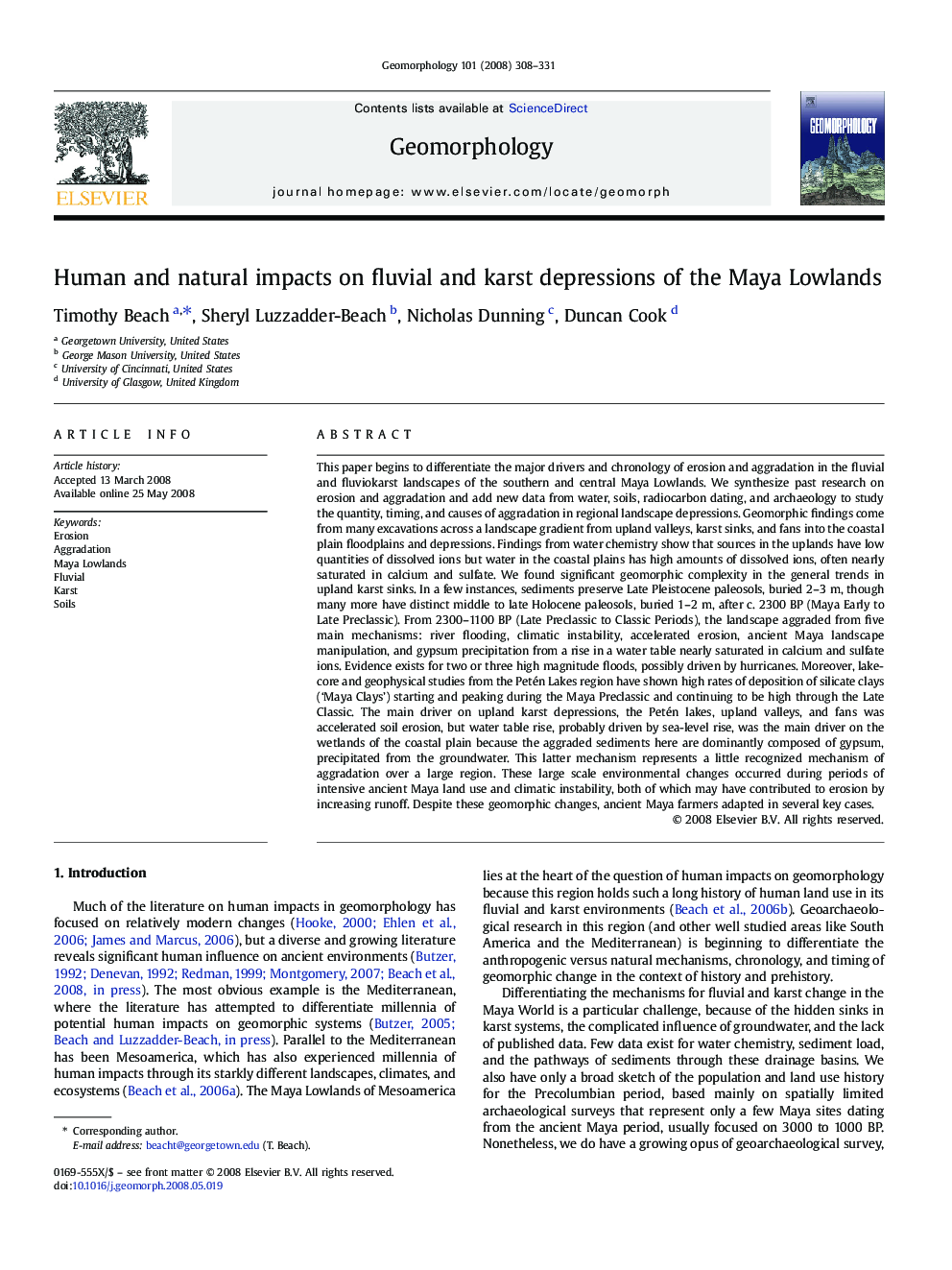| کد مقاله | کد نشریه | سال انتشار | مقاله انگلیسی | نسخه تمام متن |
|---|---|---|---|---|
| 4687008 | 1635552 | 2008 | 24 صفحه PDF | دانلود رایگان |

This paper begins to differentiate the major drivers and chronology of erosion and aggradation in the fluvial and fluviokarst landscapes of the southern and central Maya Lowlands. We synthesize past research on erosion and aggradation and add new data from water, soils, radiocarbon dating, and archaeology to study the quantity, timing, and causes of aggradation in regional landscape depressions. Geomorphic findings come from many excavations across a landscape gradient from upland valleys, karst sinks, and fans into the coastal plain floodplains and depressions. Findings from water chemistry show that sources in the uplands have low quantities of dissolved ions but water in the coastal plains has high amounts of dissolved ions, often nearly saturated in calcium and sulfate. We found significant geomorphic complexity in the general trends in upland karst sinks. In a few instances, sediments preserve Late Pleistocene paleosols, buried 2–3 m, though many more have distinct middle to late Holocene paleosols, buried 1–2 m, after c. 2300 BP (Maya Early to Late Preclassic). From 2300–1100 BP (Late Preclassic to Classic Periods), the landscape aggraded from five main mechanisms: river flooding, climatic instability, accelerated erosion, ancient Maya landscape manipulation, and gypsum precipitation from a rise in a water table nearly saturated in calcium and sulfate ions. Evidence exists for two or three high magnitude floods, possibly driven by hurricanes. Moreover, lake-core and geophysical studies from the Petén Lakes region have shown high rates of deposition of silicate clays (‘Maya Clays’) starting and peaking during the Maya Preclassic and continuing to be high through the Late Classic. The main driver on upland karst depressions, the Petén lakes, upland valleys, and fans was accelerated soil erosion, but water table rise, probably driven by sea-level rise, was the main driver on the wetlands of the coastal plain because the aggraded sediments here are dominantly composed of gypsum, precipitated from the groundwater. This latter mechanism represents a little recognized mechanism of aggradation over a large region. These large scale environmental changes occurred during periods of intensive ancient Maya land use and climatic instability, both of which may have contributed to erosion by increasing runoff. Despite these geomorphic changes, ancient Maya farmers adapted in several key cases.
Journal: Geomorphology - Volume 101, Issues 1–2, 1 October 2008, Pages 308–331